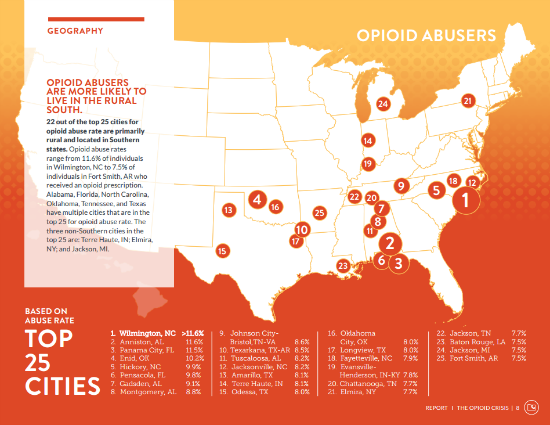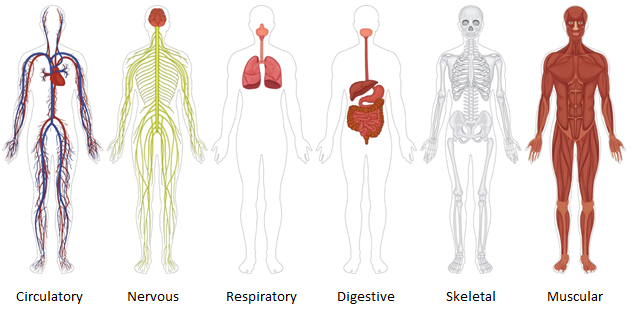
Three Things Caregivers Can Do to Prevent Opioid Abuse
Deborah Hendren, CSAPC – Substance Use Prevention Manager
All of North Carolina and the nation are facing an epidemic of drug overdose deaths. The statistics are staggering. There was a 73% increase in opioid related deaths from 2005 to 2015 in North Carolina. “A new report mapped out the top 25 worst cities in the US for opioid abuse, and North Carolina shows up four times on that list. The report, from Castlight Health, analyzed up-to-date anonymous health data from nearly a million people covered by employer-based insurance. The worst city in America for opioid abuse according to the study was Wilmington. Hickory was the 5th, followed by Jacksonville at 12th and Fayetteville at 18th.”

Adolescents and young adults misuse prescription opioids more than any other age group, and teen substance use significantly increases the risk of developing addiction. The brain continues to develop until about 24-25 years of age and undergoes dramatic changes during adolescence. One of the brain areas still maturing during adolescence is the prefrontal cortex—the part of the brain that enables us to assess situations, make sound decisions, and keep our emotions and desires under control. The fact that this critical part of an adolescent’s brain is still a work in progress puts them at increased risk for making poor decisions (such as trying drugs or engaging in risk-taking behaviors). Also, introducing drugs during this period of development may cause brain changes that have profound and long-lasting consequences.
There are three important steps caregivers can take to prevent their teens from misusing prescription drugs, reduce the chances of accidental overdose, and avoid the devastation of opioid addiction.
Step 1: Proper medication storage and disposal.
Approximately 70 percent of teens access pain medication from people they know personally – friends, family, or the stocked medicine cabinet in the bathroom. Caregivers need to be aware of the different medications they have stored within the home and keep medications safely locked up. If medications within the home are not locked up, it is crucial for caregivers to keep track of any pills that might be missing. Caregivers should dispose of any unused pills immediately and safely.
Step 2: Talk with your teen’s doctor.
Prescription opioids are generally safe when they are medically necessary and taken as prescribed. Most people who are prescribed opioids do not misuse them or become addicted. If a doctor prescribes your teen opioid pain medication following an injury or surgery, ask the doctor questions about risks of addiction, proper use, length of period they need to take it, and possible medication alternatives that are not addictive. Unless your teen is in the hospital, pain management at home following an injury or surgery should quickly shift from opioid to non-opioid medications within a few days. Many doctors are appropriately shifting away from writing 30-day refillable prescriptions in these situations. Always monitor your teen’s use of the medications, and contact your teen’s doctor immediately if you have any concerns about misuse or addiction. Early intervention is an effective way to prevent addiction.
Step 3: Engage teens in honest conversations.
Caregivers need to engage teens in honest conversations about the dangers of opioid abuse and how to avoid it. Teens may think that the medications are safe because they are legal and prescribed by doctors, but taking someone else’s medication, taking more than prescribed, or using them in combination with other medications can have serious consequences, including death. Prescription opioid misuse and addiction precedes later heroin use in nearly half of young people. With repeated misuse of prescription drugs, larger and more frequent doses of opioids are needed so teens may turn to heroin as a cheaper and more affordable alternative. The risks of overdose and death are even greater in this epidemic because fentanyl, a powerful and deadly synthetic opioid, is being laced in prescription drugs and heroin. Teens may unknowingly take fentanyl, believing it to be a prescription drug. These risks are potentially deadly and need to be communicated to your teen.
Caregivers should not feel helpless in the face of the opioid epidemic. There are practical steps you can take to ensure that your teen does not become a victim of opioid addiction, a preventable disease with tragic outcomes for the entire family. Although the solution to the opioid crisis is multifaceted and involves the collective effort of several stakeholders, caregivers play a vital role in helping to turn the tide of the epidemic in a positive direction.
NKEM OSIAN, MPH
Nkem is a Research Associate at the National Center on Addiction and Substance Abuse
Click HERE to find a prescription drop off site in your community.
Click HERE for resources and to learn more about opiate use.
References:
- The opioid crisis in America’s workforce. Castlight Health. April 20, 2016
- Parents play a pivotal role in opioid prevention. The Buzz. The National Center on Addiction and Substance Abuse.
- County – by – County Figures: The opioid crisis in North Carolina. NC Governor Roy Cooper.
- Drugs, Brains, and Behavior: The science of addiction. National Institute on Drug Abuse.
- 2013-2014 National Survey on Drug Use and Health: Model-based prevalence estimates (50 states and the District of Columbia). Substance Abuse and Mental Health Services Administration.
Interested in bringing this topic to your school or organization?
Consider scheduling one of these related programs. The Poe Center offers substance use prevention programming for grades 5-12 and adults. Call 919-231-4006 or go on line to schedule a program.
Understanding Opioids
Grade Level: middle & high school age youth | Program Length: 90 minutes
Students will learn the types and effects of opioids (prescription pain medicine and heroin) on the brain and body, how opioids affect brain chemistry, safe use of prescription medication, and how to recognize an emergency and intervene on the behalf of their peers as well as stress management as a prevention technique.
Opioids 101 for Parents/Guardians
Audience: Adults | Program Length: 90 minutes
Adults will earn about the growing concern of opioid use (prescription pain medicine and heroin) in our communities and how to recognize the risk factors, youth perception of risk, scope of the opiate problem, signs and symptoms, as well as action steps and resources to keep children from opioid use. Adults will receive relevant resources and information.
Opioid Epidemic Uncovered: Finding the Prescription for Recovery
Poe Center Annual Meeting and Luncheon Conferences
September 14 – 15, 2017
Join the Poe Center and the NC Medical Society Alliance for a special event series to examine the opioid crisis and explore collaborative solutions. Events in Raleigh and Greensboro will feature keynote speaker Sam Quinones, author of the acclaimed book Dreamland: the True Tale of America’s Opiate Epidemic, along with an exert panel to discuss the impact of opioids in their communities and the opportunities for change. Purchase tickets today.
For the Classroom: Opioid Teacher Lesson
Grades: Middle & High School
Objective: Research and learn information about the effects that dangerous drugs have on the body. Work together in cooperative groups.
Materials needed:
- one sheet of construction paper or poster board per group
- pens or pencils
- markers, crayons, or paint
- computers with Internet access or updated library resources on drug use
Lesson Plan:
- Review information about opiates and general affects on body systems. Explain that opiates are drugs that work on the nervous system to reduce pain signals reaching the brain and that we want to learn more about how they affect our entire body.
- Divide the class into groups of two or three students. Assign each group a human body system. Have each group gather information from Internet or library sources about the short term and long term affects the opiates on their assigned body system.
- Suggested sites include:
- National Institute on Drug Abuse: https://easyread.drugabuse.gov/
- National Institute on Drug Abuse for Teens: https://teens.drugabuse.gov/
- Operation Prevention: https://www.operationprevention.com/
- Provide materials for each group to create posters. Posters can contain a basic human skeleton or include organs of the assigned body system.
- Have each group present the completed poster to the class. Ask students to describe their posters and explain how opiates affect their assigned body system in the short and long term.
- At the end of each group presentation, explain how unintentional poisoning could be the outcome due to each effect.
This activity can be altered to include more or less details depending on grade level.
Additional Resources:
- Addiction Hurts video by the Poe Center
- Operation Prevention Teaching Guide for high school
- Generation Rx: Safe Medication Practices for Life
- US Food & Drug Administration
- Rx for Understanding: Preventing Prescription Drug Abuse Educator’s Guide
- Rx for Understanding: Be Smart about Prescription Drugs

